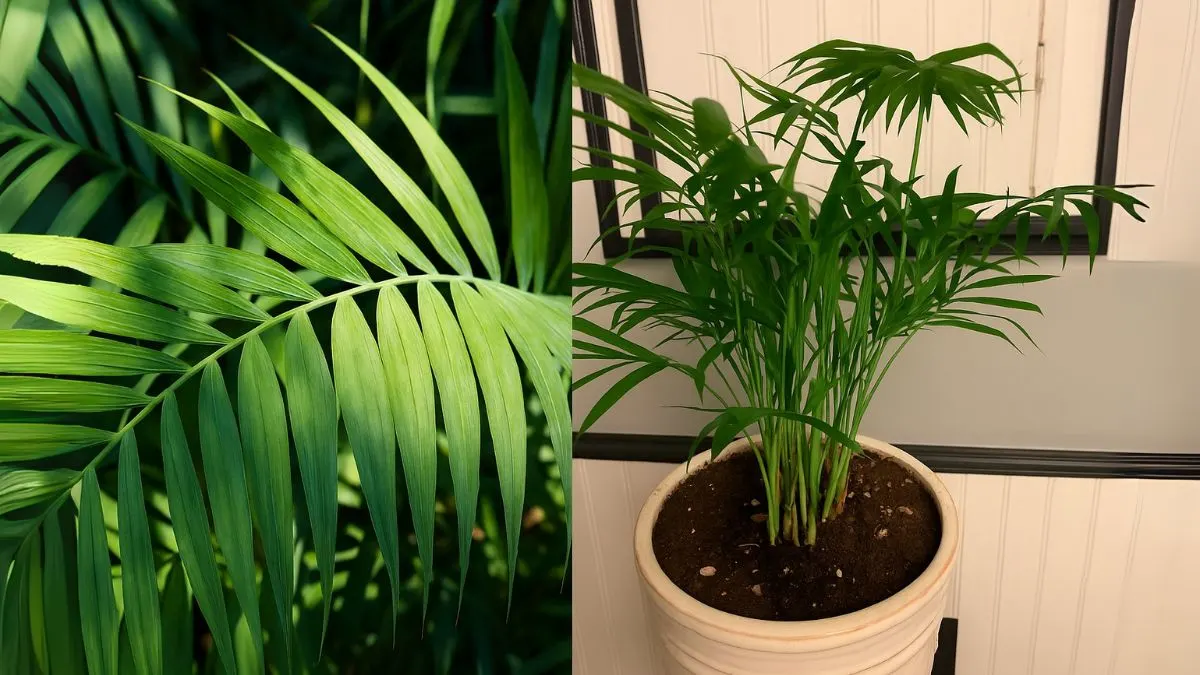If you’re looking for an indoor plant that is both low-maintenance and aesthetically pleasing, the Parlor Palms (Chamaedorea elegans) is the answer. Loved in Canada, the USA, and across the world, this tropical beauty has been a favorite houseplant since the Victorian era. Its feathery fronds and resilience make it the perfect addition to modern homes, especially for plant parents who want elegance without too much hassle.
Why Choose Parlor Palm?

- Beginner-Friendly – These low-light plants need bright, filtered sunlight but tolerate less-than-perfect conditions.
- Air-Purifying – Helps clean indoor air while adding a natural aesthetic.
- Compact Growth – Perfect for small apartments or offices.
- Evergreen Appeal – Keeps its lush green fronds year-round.
Light Requirements
Bright Indirect Light Works Best
The golden rule is to place it in bright, indirect light and maintain a consistent watering schedule. While Palms prefer medium to bright light to thrive, direct harsh sun can scorch the leaves.
- Ideal placement: Near a north or east-facing window.
- Bright, filtered sunlight works wonders for healthy frond growth.
- Can survive in low-light corners, but growth will be slower.
👉 From personal experience, I once kept my Parlor Palm in a dim hallway. While it survived, the leaves grew smaller. Once I shifted it to a brighter corner with filtered sunlight, it flourished within weeks.
Also Read: Plant Once, Enjoy Every Spring: The Magic of Sweet William
Watering Needs
Finding the Balance
Overwatering is the most common mistake with this plant. The trick is simple: water it thoroughly and then allow it to dry a bit.
- Water every 1–2 weeks, depending on indoor conditions.
- Always allow the topsoil to dry out between waterings.
- Reduce watering in winter as the plant enters a slow growth phase.
💡 Tip: If leaves start turning brown at the tips, it may be due to inconsistent watering or hard tap water. Try filtered water or let tap water sit overnight before using.
Soil and Drainage
- Use well-draining potting mix designed for tropical plants.
- The key is adequate drainage and evenly moist soil.
- Add perlite or sand to prevent waterlogging.
Remember, soggy soil = root rot, so drainage holes in pots are non-negotiable.
Temperature & Humidity ️
- Thrives in normal indoor temperatures between 65–80°F (18–27°C).
- Keep away from cold drafts or heaters.
- Loves moderate humidity but adapts well to normal indoor air.
If you live in Canada or the USA where winters get dry, misting the leaves occasionally helps prevent dryness.
Fertilizer & Feeding
- Feed monthly with a balanced liquid fertilizer during the growing season (spring and summer).
- Reduce feeding in fall and winter.
- Avoid over-fertilizing—it can burn the roots.
Also Read: Lily Varieties That Will Make Your Garden Look Like a Fairytale
Common Problems & Fixes
Problem |
Cause |
Solution |
Yellowing leaves |
Overwatering |
Allow soil to dry and improve drainage |
Brown tips |
Low humidity / inconsistent watering |
Mist leaves, adjust watering schedule |
Slow growth |
Lack of light |
Move to a spot with bright, filtered sunlight |
Styling With Parlor Palm
- Looks stunning in woven baskets or ceramic pots.
- Great for living rooms, offices, and bedrooms.
- Can grow up to 4 feet indoors, creating a soft tropical feel.
Personal Experience
When I first bought a Parlor Palm, I treated it like other houseplants—watering frequently and placing it near a sunny window. Within a month, the leaves started turning brown. After reading up, I realized it prefers bright, indirect light and less frequent watering. Once I adjusted my routine to watering every 1–2 weeks and letting the soil dry out a bit, the plant bounced back beautifully. Now it’s the centerpiece of my living room, admired by everyone who visits.
Why It’s Perfect for Global Homes
The Parlor Palm isn’t just famous in its native regions—it’s popular across the world. From apartments in New York and Toronto to tropical homes in Asia, it adapts to different conditions. Its low-light tolerance, compact growth, and timeless elegance make it one of the most versatile indoor plants.
The Parlor Palm plant proves that not all indoor palms are fussy.
👉 Ready to add one to your collection? Start small with a potted palm and watch how quickly it becomes your favorite indoor companion.






